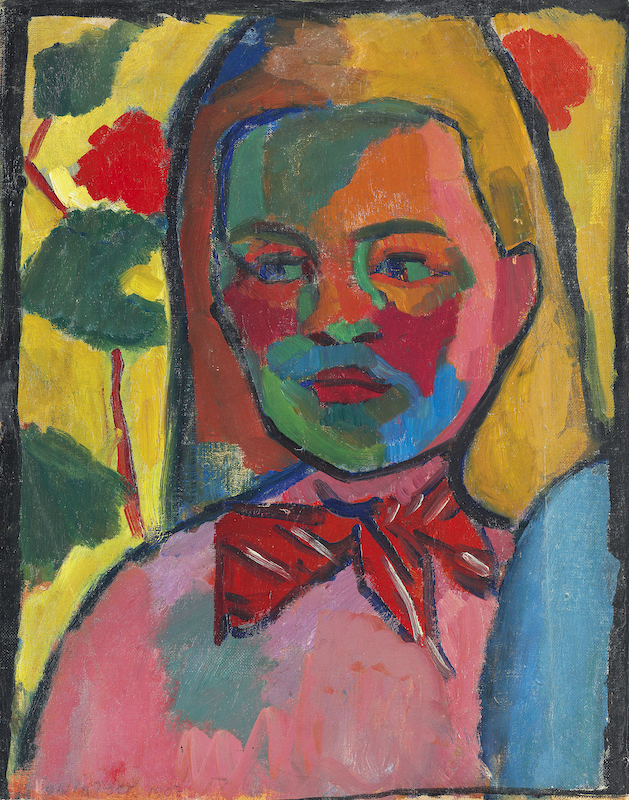There's been a lot of negative publicity about this exhibition, centred around the lack of female artists on show; and that, coupled with the sense of weariness at the prospect of more the same old Post-Impressionist names left me pretty unexcited. In fact, it starts very well. The first few rooms are a tightly curated run-through of French art trends from the 1880s to the turn of the century. The big names are there, justified both by the quality of the works chosen and the thoughtful labelling.
Even if you've already overdosed on Cezanne and don't feel the need to look at The Bathers again (it is after all permanently on show at the National Gallery), there is plenty of interest. His portraits were thin on the ground at the Tate show but here you get the glorious Ambroise Vollard (1899), suit and background alive with brush-marks and disparate, vibrant colours, eyes dead and yet strangely characterful. It's a great pity that Picasso's Vollard portrait was not available. Degas is surely an anomaly in this company - if his art moves Impressionism on, then the same could be said of others in the group - but Gauguin and Van Gogh shine. Personally, I'm past the biographical angst generated by Nevermore. As an object in itself, it is wholly successful in conveying fear, mortality, mystery and spiritual dread. And whenever you see Gauguin's work in the flesh his use of colour is just astounding: the still life here lights up the room.
There's an equally good summary of pointillism, symbolism and the Nabis, although the paintings are less compelling. Claudel gets a look in, with a disappointingly conventional image which does little in itself to justify her inclusion. Similarly, Toulouse-Lautrec seems undervalued - his Tristan Bernard at the Velodrome Buffalo (1895) is wishy-washy. And, given the inclusion of Picasso's lurid and leering Gustave Coquiot (1901), an example of his Moulin Rouge works would have been a useful comparison.
However, the exhibition then becomes a vague 'this is what was happening in...' survey which makes relatively little effort to either link the paintings back to France, or to explain how these artists were 'inventing modern art'. We inexplicably have two large paintings by Corinth but no Italian Futurism, no Russian art (which is perhaps understandable), no homegrown talent, and precious little German Expressionism.
I would have no difficulty walking through rooms of early twentieth century art, but given the range of loans and the effort which had clearly been put into this show, I expected a more exciting selection. A Munch field of cabbages, especially when placed next to The Death Bed's existential bleakness, seems only there to fill up a space. Two full length, full frontal Klimt portraits seems one too many. A small jewel-coloured Kandinsky landscape leaves you desperate for more. Yet Delaunay's Young Finnish Woman is staggering: Fauvist colour with psychological punch. It's only in the last room that things come together again. Picasso's Portrait of Wilhelm Uhde is a fabulously characterful study even without the Cubist experimentation. Together with the solid chunkiness of Woman with Pears, it's a reminder that although Picasso might now be deemed 'problematic', he also seismically shifted the world as we see it. An ever-decreasing naturalism sequence of Mondrians brings things to a satisfying conclusion. You can leave feeling that you have seen 'the invention of modern art'.
There is an abundance of wonderful artworks in the National Gallery's exhibition, but both the ambition and the achievement are disappointing. Haven't we moved on from a linear 'birth of modernism' narrative? Isn't it time to acknowledge the limitations of a monolithic 'Impressionist era' approach? If you are going to use either of those arguments today, you need to make a much better case than After Impressionism does.




No comments:
Post a Comment